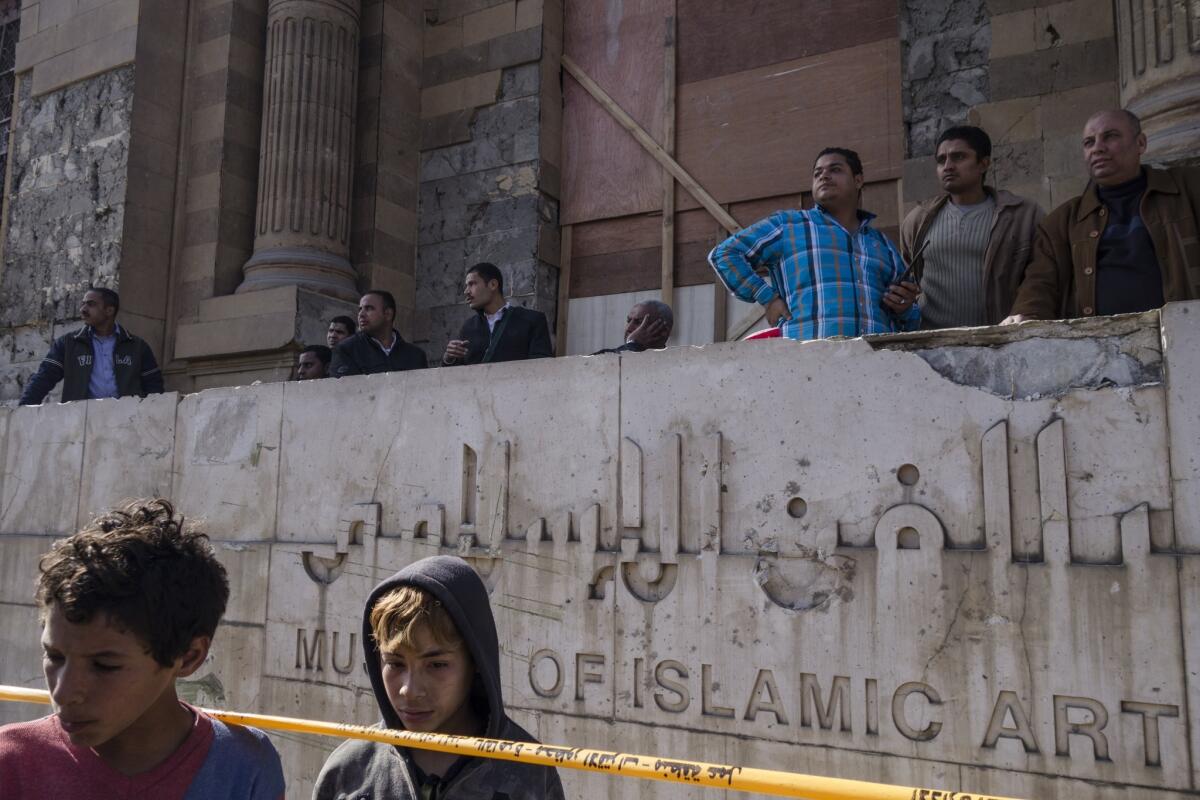Bombing at Egyptian police building damages nearby Islamic museum

- Share via
CAIRO -- One of Egypt’s loveliest but lesser-known museums was a casualty of a powerful bomb on Friday targeting a police headquarters directly across the street.
The stately 19th century Museum of Islamic Art in downtown Cairo, filled with precious cultural objects such as manuscripts, astrolabes and ceramics, was badly damaged by the early-morning blast.
The explosion, one of three blasts Friday that killed five people in the city, shattered windows, knocked off big chunks of masonry from the museum’s ornate facade, and left a tangle of wires in the entryway. Doors dangled crazily from hinges.
[Updated, 8:10 a.m. PST Jan. 24: Security forces later confirmed that a fourth bomb had exploded on a road in the capital as a police convoy passed by, killing one person.]
The country’s minister of antiquities, Mohammed Ibrahim, said the museum, which was recently renovated at a cost of nearly $15 million, would have to be closed and repaired at a cost that he estimated to be twice that of the previous work.
More than an hour after the explosion, there was little evidence of any organized police effort to secure the museum and its valuable artifacts. A light line of tape was placed in front of the museum entrance, but cordons of riot police appeared to have been deployed mainly to block off access to the wrecked security headquarters across the street, where four people died.
Volunteers later converged on the scene, fearful of looting like that which hit Cairo’s famed Egyptian Museum amid the upheaval in adjacent Tahrir Square in 2011. Saturday marks the three-year anniversary of the start of that uprising, which toppled longtime dictator Hosni Mubarak.
The museum was inaugurated in 1881, then known as the Gallery of Arab Antiquities, with a small collection mainly garnered from mosques and tombs in Egypt, according to its website. It moved to larger quarters as its collection expanded to include tens of thousands of objects including coins, carvings, textiles, ancient weaponry and jewelry from across the Muslim world.
Twitter: @laurakingLAT
Special correspondent Amro Hassan contributed to this report.
More to Read
Sign up for Essential California
The most important California stories and recommendations in your inbox every morning.
You may occasionally receive promotional content from the Los Angeles Times.









